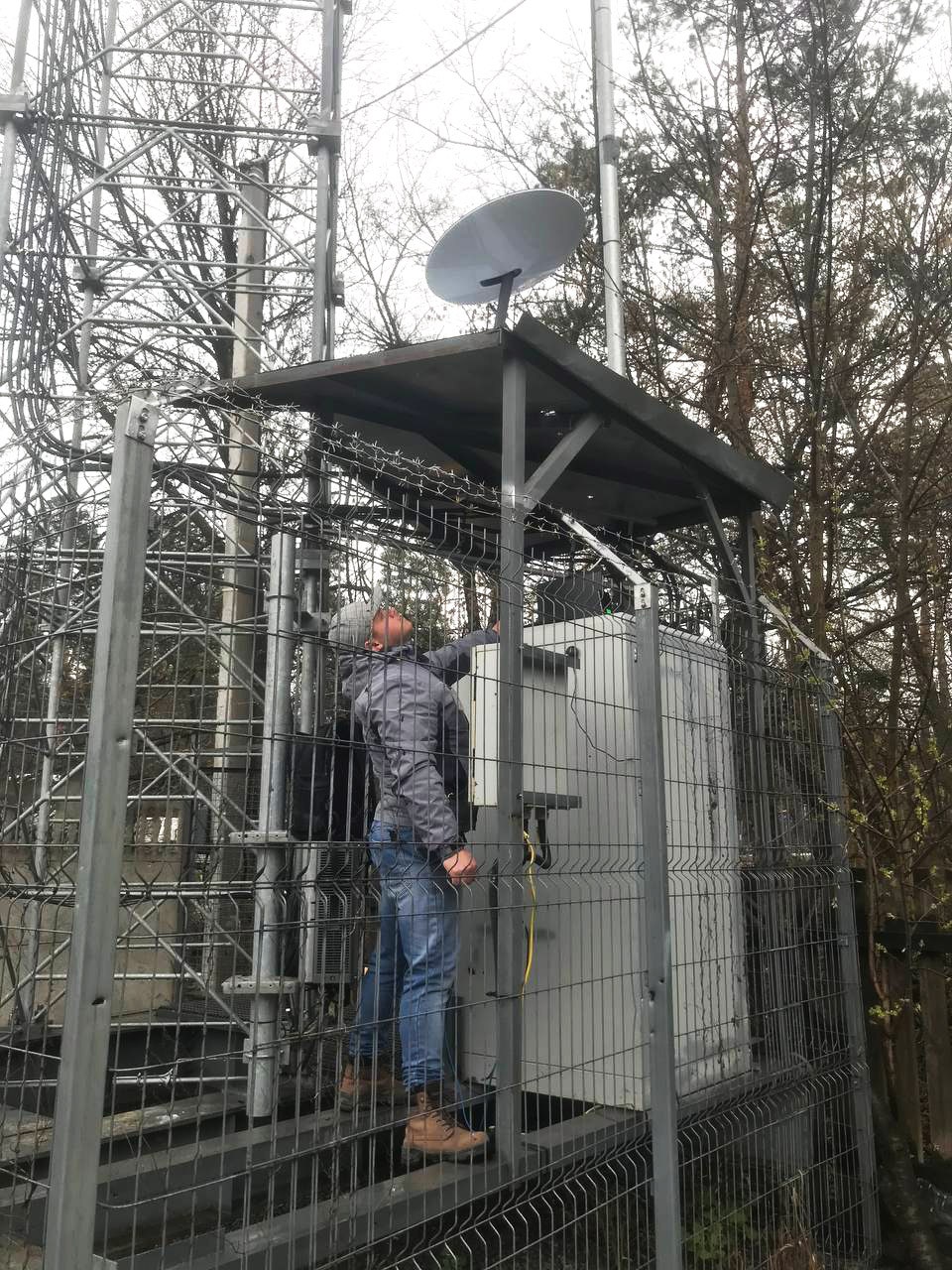[ad_1]
On March 29, Ukrainian forces rolled into the shattered streets of Irpin, northwest of Kyiv, littered with blackened wreckage and dead bodies. The destruction had knocked all 24 of the city’s cell towers offline, preventing traumatized survivors from letting friends and relatives know they were safe. “Most of those base stations had significant destruction,” said Kostyantyn Naumenko, head of radio access network planning and development at the cellular network Vodafone Ukraine. Just two days later, with help from Elon Musk, the city was back online.
Irpin was reconnected on March 31 after engineers from Vodafone Ukraine arrived with a circular white satellite antenna known by its manufacturer as Dishy McFlatface — a terminal for the Starlink satellite internet service offered by Musk’s SpaceX. The engineers mounted the receiver and its motorized base to a mobile base station on the edge of Irpin whose fiber-optic connection and power had been severed, and attached a generator. Within hours, the city was back online, and so were its remaining residents. “The first thing they are doing is calling relatives to say that they are safe and sound,” Naumenko says.
The speed with which Irpin was brought back online shows the ingenuity of the engineers involved and the nimbleness with which Ukraine’s government has used Starlink terminals. The country has received more than 10,000 of the devices since Russia invaded, in part thanks to funding and other help from the US government. The terminals have already become central to the country’s response to the war, finding both civilian and military uses.
Courtesy of Vodafone Ukraine
The speedy, widespread rollout of Starlink in Ukraine has also been an unplanned experiment in the potential geopolitical power of next-gen satellite internet services. If SpaceX or similar providers are willing, high-speed internet from the sky could be a powerful way to provide connectivity to people or populations suffering the privations of war or authoritarian government. “In Ukraine you could see immediately that Starlink and other constellations mean you have the opportunity to have a resilient system protected from traditional ground attacks or control,” says Rose Croshier, a policy fellow at the Center for Global Development, a think tank headquartered in Washington, DC. SpaceX did not respond to queries about its work in Ukraine or whether it might offer Starlink in other conflict zones or places where internet access is restricted.
SpaceX has launched more than 2,000 Starlink satellites since 2019 and offers internet service to much of Europe, parts of Central and South America, New Zealand, and southern Australia. It is the most mature of three projects, including one from Amazon, creating a new generation of high-speed internet services using swarms of small satellites in low Earth orbit.
But it wasn’t war that brought Starlink to Ukraine — it was the service’s potential to improve connectivity in a country with vast rural regions. Ukraine’s Ministry for Digital Transformation first made contact with SpaceX several months before the war started, says departmental adviser Anton Melnyk. Starlink executives spoke with Ukraine’s digital minister, Mykhailo Fedorov, about activating the service late in February. Days later, Russia invaded, and Musk’s service became attractive for a different reason.
Two days after Russia invaded, Fedorov tweeted a request for Starlink terminals at Musk. Ten hours later, the SpaceX CEO confirmed that Starlink’s service was “active” in Ukraine. Just two days later, on February 28, Fedorov posted photos of a truck stacked high with Starlink boxes, and himself unboxing a Dishy.
[ad_2]
Source link


